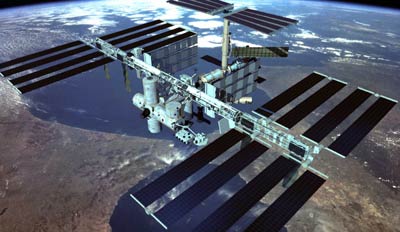A meaningful role for the space stationby Mark A. Wessels
|
| The truth of the matter is, we don’t actually know if some sort of life exists on Mars. That is the whole point of going there. |
Sometime within the next few Earth-Mars passes, NASA plans to send a sample-return mission to Mars. This robotic craft would collect soil and rock samples from interesting places on the Martian surface and load those materials into a fueled rocket. That rocket would return the samples to the Earth for scientific analysis. The reason for such a mission is that no robotic spacecraft sent to Mars during this time frame could possibly carry with it the capabilities available in laboratories here on the ground.
The idea of bringing physical samples of Mars back to Earth has raised serious concerns about the possibility of contaminating the Earth’s biosphere with an unknown Martian organism. The truth of the matter is, we don’t actually know if some sort of life exists on Mars. That is the whole point of going there.
Concern about extraterrestrial contamination is not without precedent. The Apollo 11 astronauts were quarantined for a time after their return from the Moon. Apollo 12, though, revealed something outright staggering. Apollo 12 landed within walking distance to a robotic Surveyor craft, which had been sent to the Moon a few years earlier. Astronauts Bean and Conrad recovered components off the craft, and brought them back to Earth. Incredibly, viable bacteria were found on the parts. These bacteria, which had contaminated the craft during its construction, had been exposed to hard vacuum and cosmic radiation for years, and were still alive. No one had believed that even the simplest forms of life could survive such inhospitable conditions, yet these had. The point is that if these bacteria could survive an unprotected trip to the Moon, then some existing Martian life, even if it has lain dormant for eons, could be reconstituted if placed in the appropriate environment. Such life could pose a threat to life here on Earth.
To be completely fair, the Earth has already been “contaminated” by Mars. Pieces of Mars in the form of meteorites have been discovered here on Earth. They were blasted off the Martian surface by ancient asteroid impacts, orbited the Sun for millions of years, became caught by the Earth’s gravity, fell to the ground, and remained there for thousands of years before being discovered. However, no irrefutable signs of life have yet been discovered in any of them.
If we err, we should err on the side of caution, and bring the samples to a place that could be physically isolated from the Earth’s biosphere, yet contain the most sophisticated scientific instruments available. The ISS could be that place.
| Now we have Mars in our sights. Let’s turn the ISS into a laboratory for exploring this remarkable, mysterious, and important place. |
After completing the station, one or two more shuttle flights or other launches could deliver and install the instruments. These could include microscopes; magnetic resonance, infrared, and mass spectrometers; x-ray diffractometers; chromatographs; enzymatic assays; even DNA sequencers. The samples themselves would be confined to a series of hermetically sealed chambers, similar to those that are used to handle dangerous biological materials. Scientists aboard the ISS would never come in direct contact with the Martian material. As an extra measure of safety, the instruments could even be operated from the ground by remote control, requiring no people to be aboard.
After having already spent so much on the ISS, it should serve a meaningful purpose. And now, we have Mars in our sights. Let’s turn the ISS into a laboratory for exploring this remarkable, mysterious, and important place.
